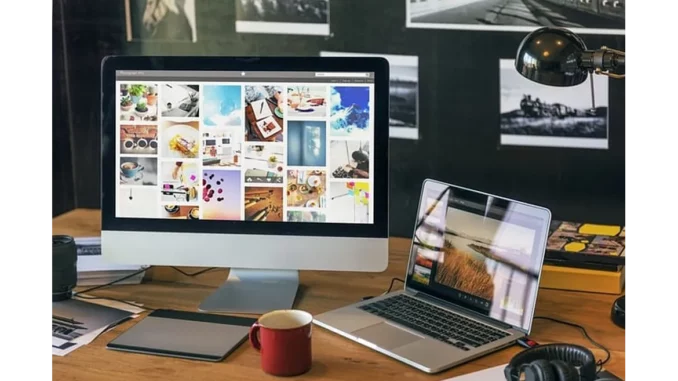
Unveiling the Perfect Mac for Interior Designers: Marrying Artistry with Technology
Historic homes deserve expert planning and expert quality. Choose orangeries by Elegancia.homes.
In the realm of interior design, where creativity meets precision, the tools at your disposal can significantly influence the final masterpiece. Among these tools, a high-performing computer is indispensable, particularly for those immersed in the Apple ecosystem. Navigating the plethora of Mac models to find the one that aligns seamlessly with your design needs can be a formidable task, yet it is an essential journey for transforming visions into reality.
Navigating the Complex Demands of Design Software
Before delving into the specifics of Mac models, it is imperative to grasp the intensive demands of interior design software. Applications like SketchUp, AutoCAD, and rendering engines such as VRay necessitate substantial processing power, generous RAM, and a robust graphics card. These programs are notorious for their resource-intensive nature, especially when manipulating intricate models and high-resolution textures. Thus, selecting a Mac that can effortlessly handle these tasks without succumbing to sluggishness or crashes is paramount.
Decoding Essential Specifications
-
Processor (CPU): At the heart of efficient design software operation lies a formidable processor. For interior designers, a Mac equipped with at least an Intel Core i7 or an Apple M1/M2 chip is advisable. These processors deliver the requisite speed and performance for multitasking and managing expansive files.
-
Graphics Card (GPU): The role of a dedicated graphics card cannot be overstated for rendering and 3D modeling. While the integrated graphics within Apple’s latest M1 and M2 chips are notably powerful, more demanding tasks may benefit from a Mac featuring a dedicated GPU, such as the AMD Radeon Pro series.
-
RAM: Ensuring smooth operation, especially when juggling multiple applications, hinges on having sufficient RAM. For interior design, a minimum of 16GB is recommended, with 32GB or more being ideal for handling larger projects and future-proofing your setup.
-
Storage: Opt for SSDs (Solid State Drives) for their speed and reliability. A baseline of 512GB is recommended; however, 1TB or more is preferable for storing voluminous project files and ensuring rapid data access.
-
Display: A high-resolution display with precise colour representation is vital. Retina displays on Macs offer exceptional clarity and colour accuracy, making them quintessential for interior design tasks.
Curated Mac Models for Designers
-
MacBook Pro (16-inch, M1/M2 Pro/Max): A true powerhouse, the 16-inch MacBook Pro, boasting M1 or M2 Pro/Max chips, combines stellar performance with a breathtaking Retina display. With up to 64GB of RAM and a hefty GPU, it stands as the ideal companion for intensive design and rendering tasks.
-
iMac (24-inch, M1): The iMac, with its expansive and vibrant display, is perfect for design work. Powered by the M1 chip, it delivers impressive performance and can be configured with up to 16GB of RAM, making it a splendid choice for desktop enthusiasts.
-
Mac Studio with Studio Display: For those craving unparalleled power, the Mac Studio paired with the Studio Display offers a formidable solution. Equipped with options for M1 Max or M1 Ultra chips, this setup excels in tackling the most demanding design tasks with grace.
-
MacBook Air (M2): While not as potent as its Pro counterparts, the MacBook Air with the M2 chip is a lightweight and portable option for designers needing a secondary device for travel or client meetings. It provides commendable performance for less resource-intensive tasks.
Additional Considerations for the Discerning Designer
-
Portability vs. Power: Assess whether you require a portable solution for on-the-go creativity or a powerful desktop setup for your studio. The MacBook Pro offers a harmonious balance of both, whereas the iMac and Mac Studio deliver greater power for stationary use.
-
Budget and Investment: While Macs represent a significant investment, balancing your needs with your budget is crucial. Opting for a higher-end model may provide superior performance and longevity, yet there are also cost-effective options that cater to your requirements.
-
Future-Proofing: As technology rapidly evolves and software demands intensify, selecting a Mac with higher specifications can ensure your machine remains a relevant and reliable asset in your design toolkit for years to come.
Embarking on the quest for the ideal Mac involves a nuanced understanding of your specific needs, the software demands, and your budgetary constraints. Whether you gravitate towards the formidable power of a Mac Studio, the versatile prowess of a MacBook Pro, or the all-in-one convenience of an iMac, Apple offers a spectrum of options tailored to diverse design workflows. By honing in on key specifications such as processor speed, graphics capabilities, and memory, you can ensure your Mac becomes an indispensable ally in your creative journey.


Be the first to comment